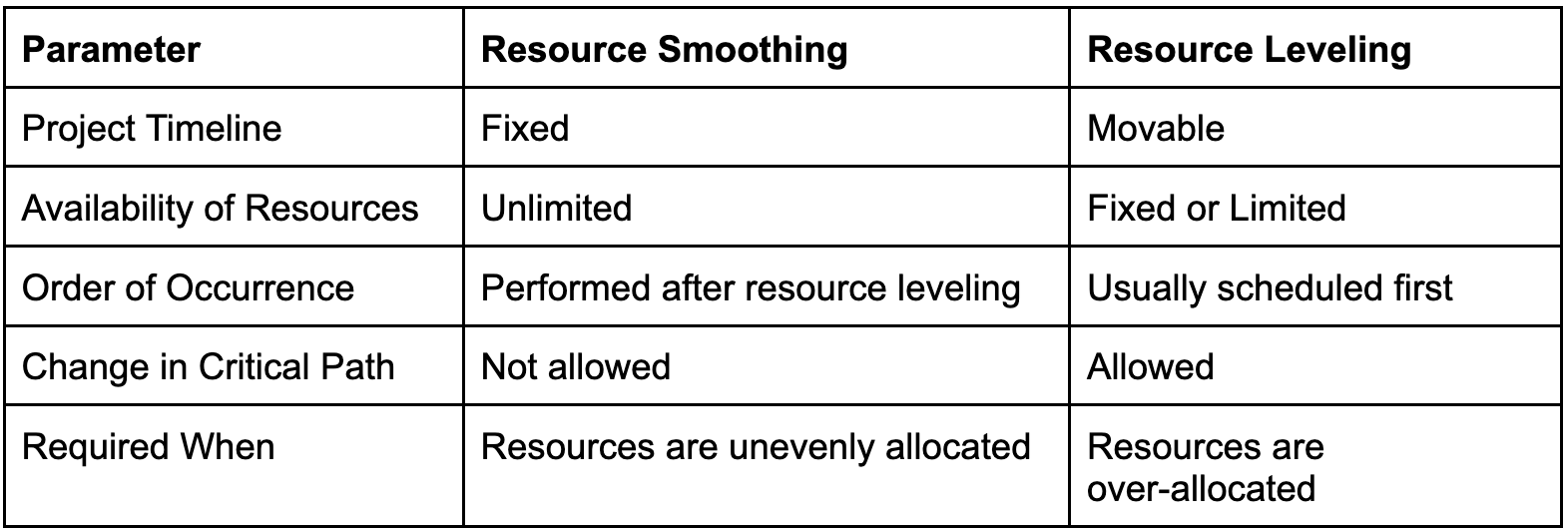Table of Contents
Resource Optimization Techniques In Project Management
Author

Date

Book a call
Any business that operates without efficient resource optimization techniques in place is opting for a momentary climb up the ladder. Businesses that fail to manage resources appropriately have to endure high costs in many business processes as it leads to poor day-to-day operations, long-term strategies, as well as financial standing.
Making the optimum utilization of all available resources is key to sustainable growth.
To avoid both major and minor operational and financial setbacks, it is important that businesses invest in implementing resource optimization techniques. In this article, we will be talking about how to optimize resources in projects for the IT sector.
Let’s begin.
What Is Resource Optimization?
Resource optimization is the process of allocating available resources in the most efficient manner to achieve desired goals. These resources can be in any form, including time, capital, electronics, and manpower. Both under-utilization and over-utilization of these resources can lead to higher costs, burnouts, and turnaround time.
The primary goal of resource optimization is to maximize the productivity of resources along with reducing costs of labor and other expenses. It can also help deliver quality products on pre-determined timelines.
Key Benefits Of Resource Optimization In Project Management
Optimizing resources brings more than one advantage to organizations. Some of the most prominent of these are
1. Demand Forecasting
Demand forecasting is the process of predicting future customer demands for a defined period based on past data analysis. Making these estimates is an important part of resource optimization and risk management. Demand forecasting is helpful for various business processes, including decision-making and business strategy formulation.
2. Resource Scheduling
Resource scheduling is the process of assigning the right resources to the right tasks. This is done based on the employee's skills, availability, and capacity. Resource scheduling helps ensure employees have adequate time to prepare for and complete the tasks assigned to them. It also helps save capital and properly utilize each available resource without overburdening anyone with tasks.
3. Improved Transparency And Trust
Things can become chaotic without the right resource optimization techniques in place. Project Managers might assign tasks to the same resources in a pool, and others might be left out. This creates confusion and leads to poor project management. With appropriate optimization, all ongoing and upcoming tasks can be viewed and planned easily, leading to better transparency and trust among teams.
4. Reduced Overheads And Increased Revenue
Inefficient use of resources eventually lead to higher expenses in every aspect of running a business. Instead of utilizing the available resources, there might arise the need to hire more employees. However, efficient resource utilization can help reduce these costs along with producing desired results.
Resource Optimization Techniques To Achieve Cost-Efficiency
Resource optimization in IT projects are implemented to make necessary changes in project deliverables and manage allocated resources and resource accessibility. These techniques also bring about cost-efficiency, which might or might not be the ultimate goal, but is a very important part of the business strategy.
Here are two of the most used resource optimization techniques:
Resource leveling
Resource leveling is a process where the number of resources is fixed, but the commencement and completion dates of a project are altered as required to produce quality output. This resource optimization technique helps project managers to allocate resources in a balanced manner while considering the demand for a particular resource and its availability. It also helps reduce employee burnout and allocate the tasks that employees are qualified for and experience.
Resource smoothing
In the resource smoothing technique, the dates of project initiation and completion are fixed, but the project managers are free to allocate all the necessary resources. It is also known as time-constrained scheduling and helps ensure project requirements stay as per the pre-defined plan. Resource allocation is done based on the availability and priority of the tasks. If one task initiation is critical, the project manager can move resources from other less critical tasks and meet the timeline.
Difference Between Resource Smoothing And Resource Leveling
Both resource smoothing and leveling are widely used project management techniques aimed at achieving project goals while maintaining constraints. But they are fundamentally different in their approach. Some of the major differences include (and are not limited to):

How To Effectively Implement Resource Optimization Techniques
To overcome all the challenges and ensure effective implementation of resource optimization techniques, it is first necessary to realize that there is no textbook solution that can work the same for all organizations. Optimum resource allocation is a requirement-based process that is also ongoing in nature. Continuous research can lead to ensuring improvement in the implemented resource optimization techniques.
At GeekyAnts- App Design & Development Studio, we undertake the planning of projects both as per resource and project requirements. We work by implementing techniques to ensure no resource is over-booked or under-booked. We also ensure all resources are allocated appropriately by implementing OKRs, upskilling programs for employees, analyzing project requirements, and determining the best suitable resources based on analyzing their interests and expertise.
This approach of combining multiple factors to analyze requirements allows us to ensure higher employee satisfaction and retention, enhance market presence, build a work culture that helps gain the trust of existing and potential clients and employees, and eventually makes running the organization easier. It is an agile way of working that requires constant monitoring of resources.
Conclusion
Every successful business requires efficient resource optimization to stay ahead of competition and market challenges. It is an ongoing process that gets influenced by many factors such as market conditions and business goals. At GeekyAnts, we make sure to employ the right resource optimization techniques and work continuously towards achieving sustainable growth.
Dive deep into our research and insights. In our articles and blogs, we explore topics on design, how it relates to development, and impact of various trends to businesses.





